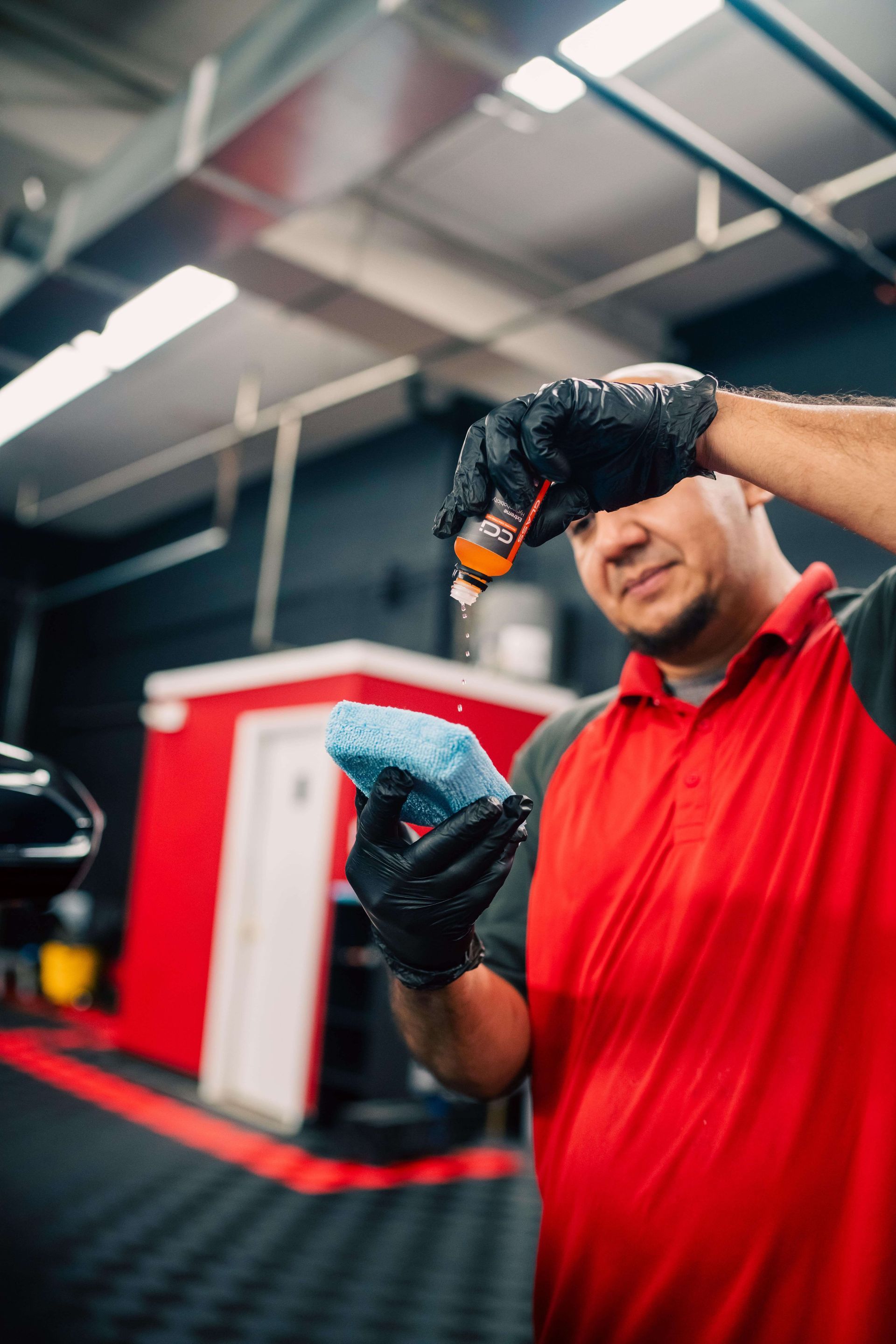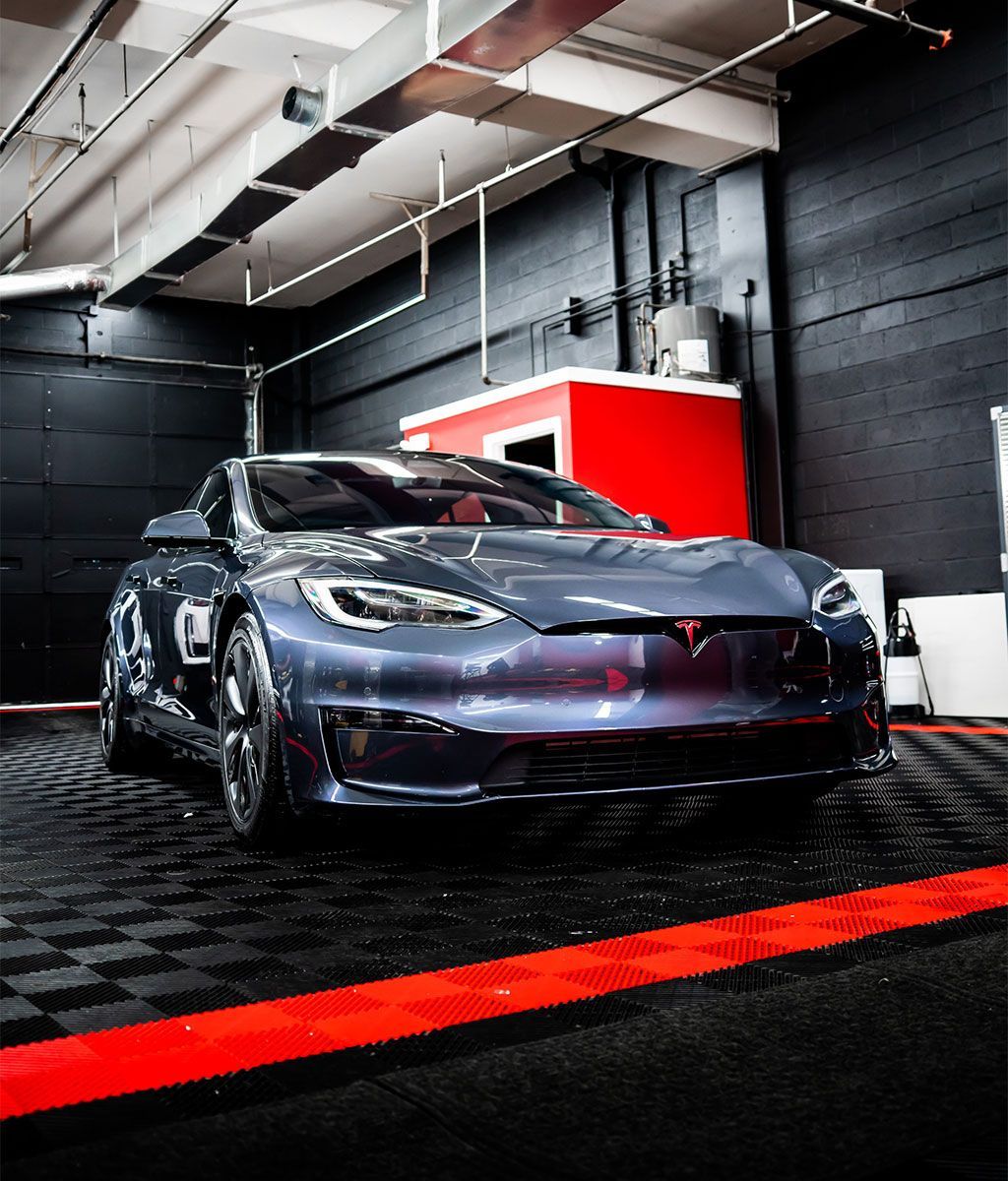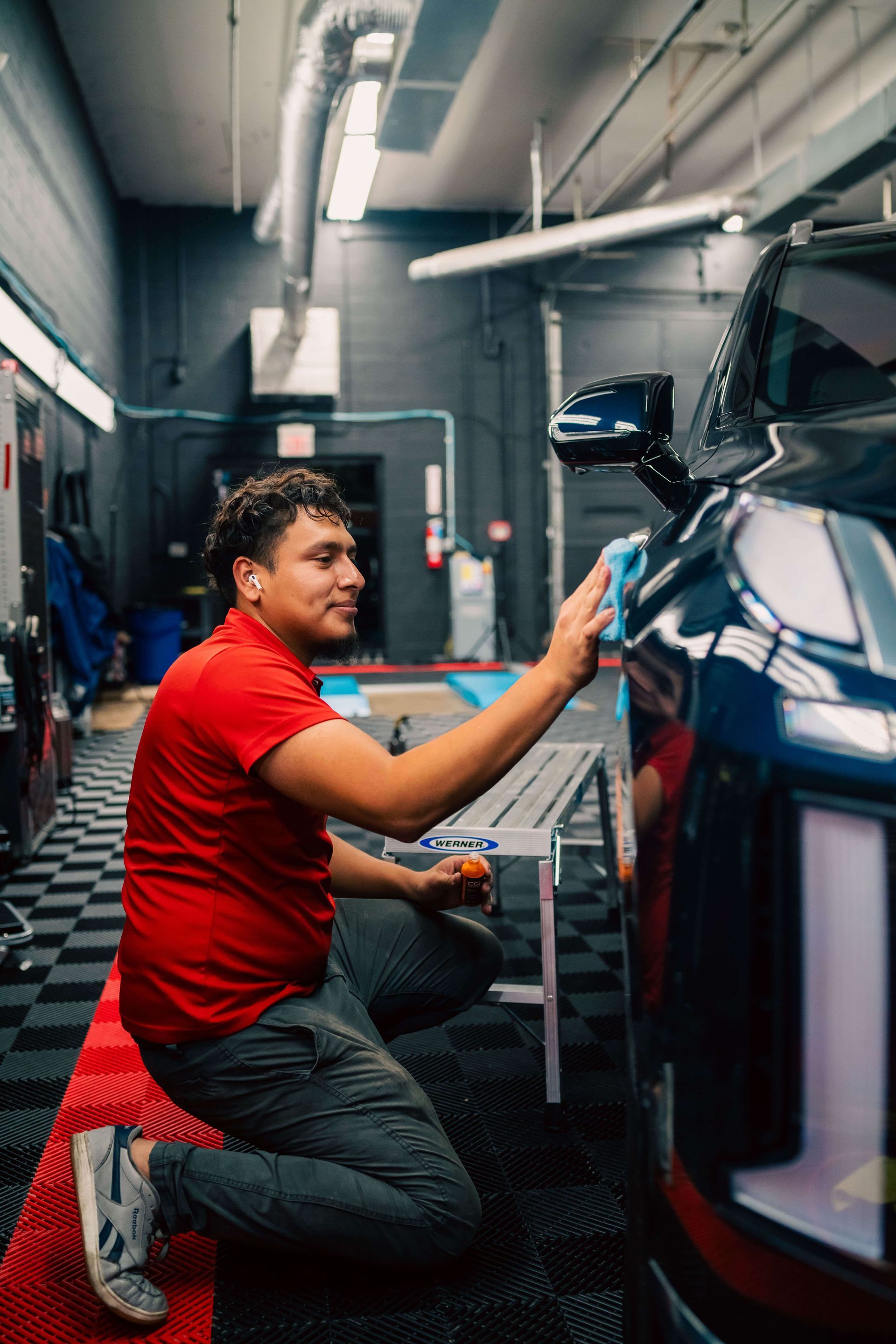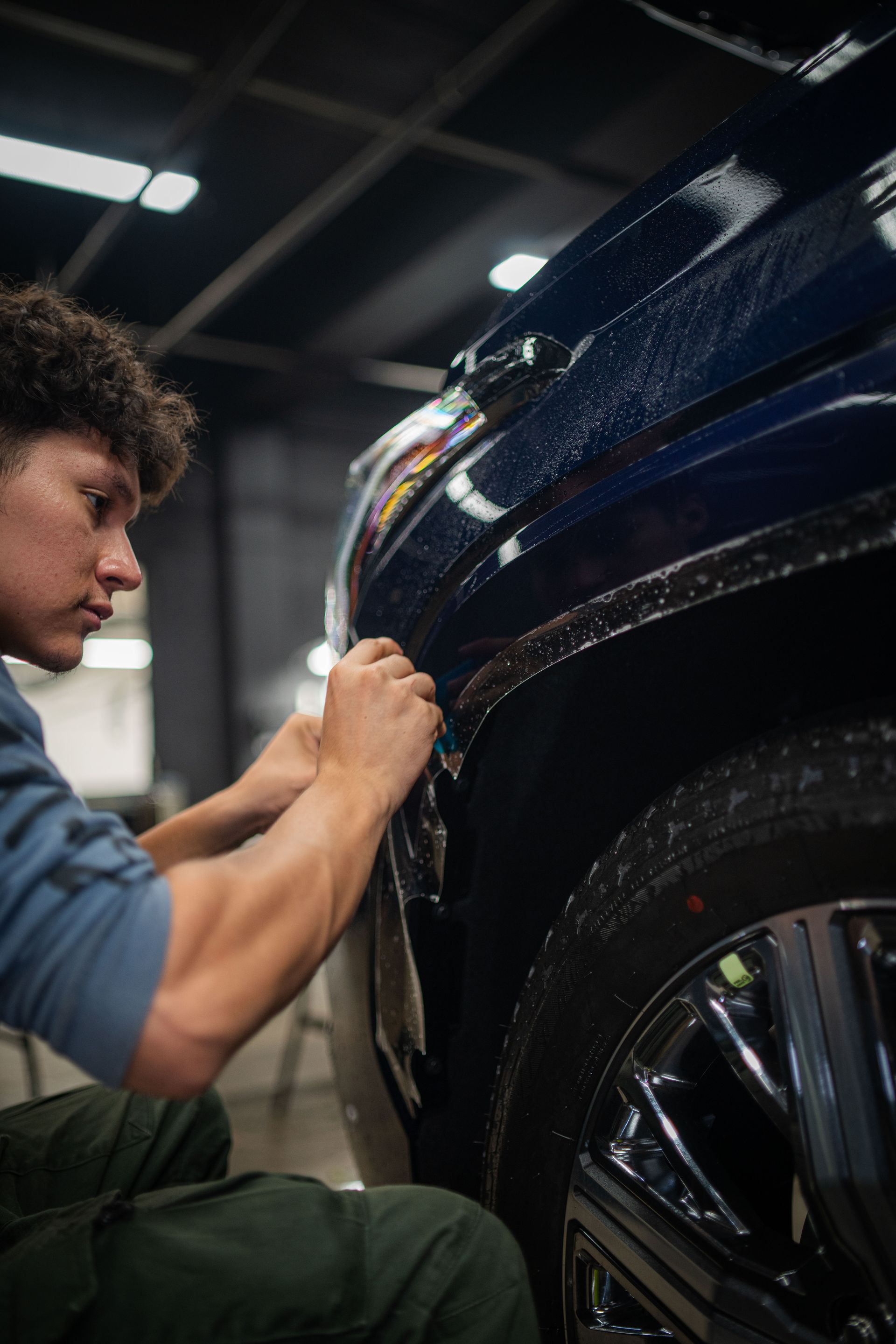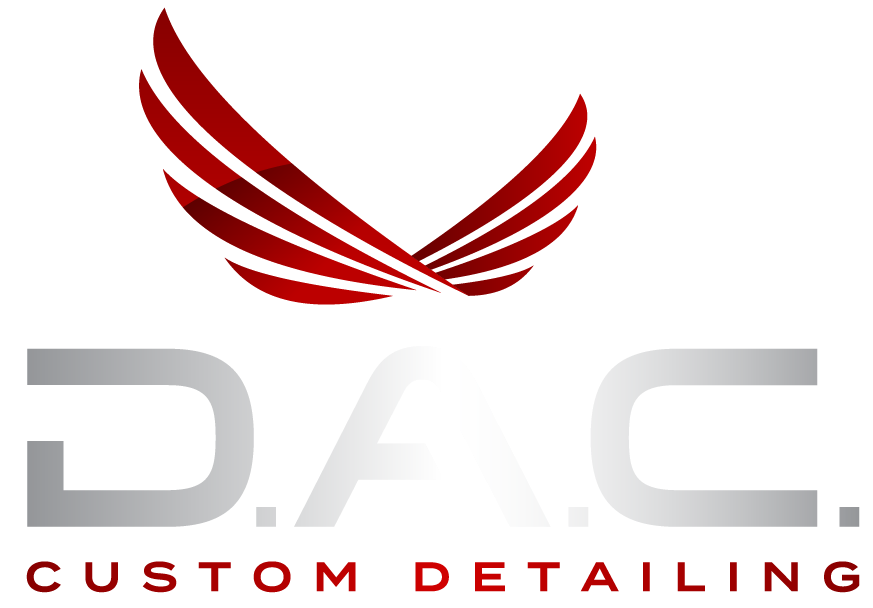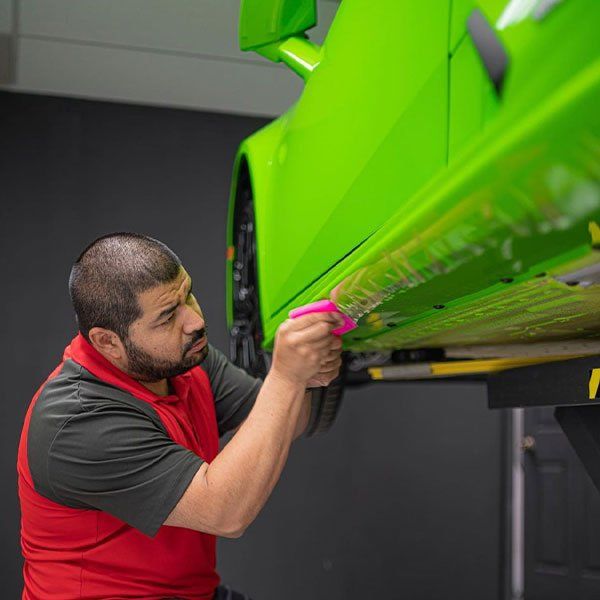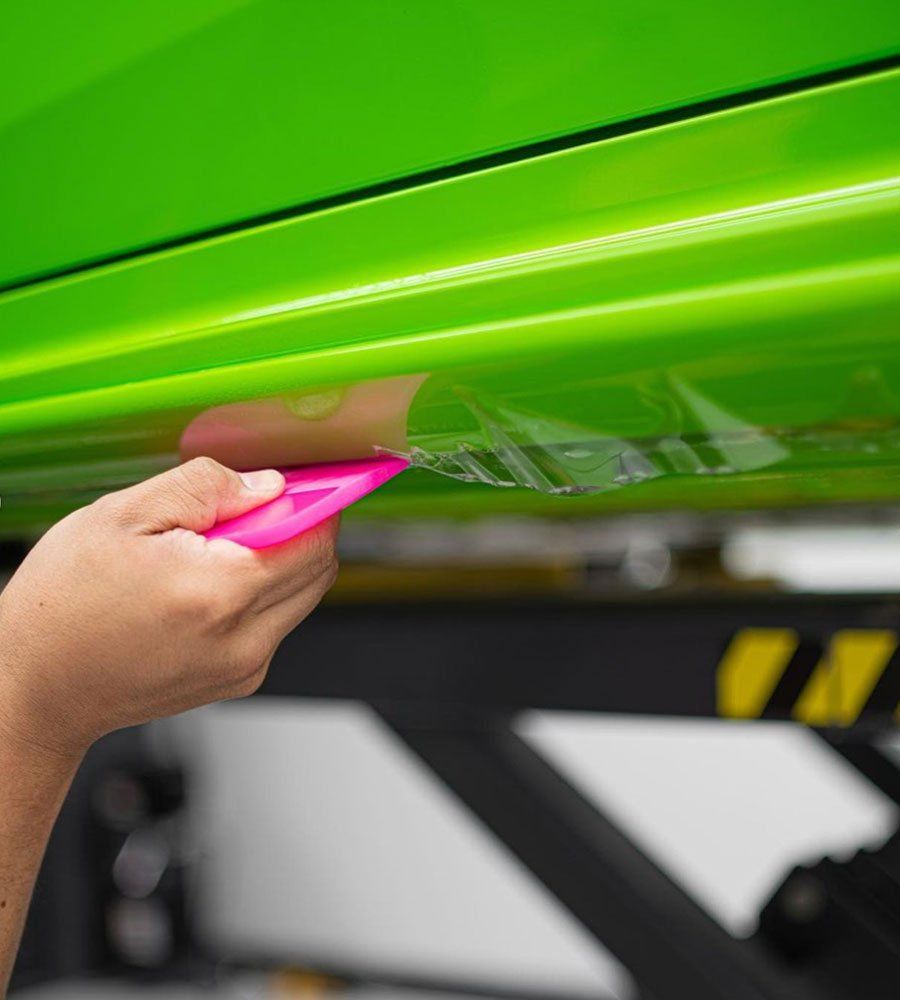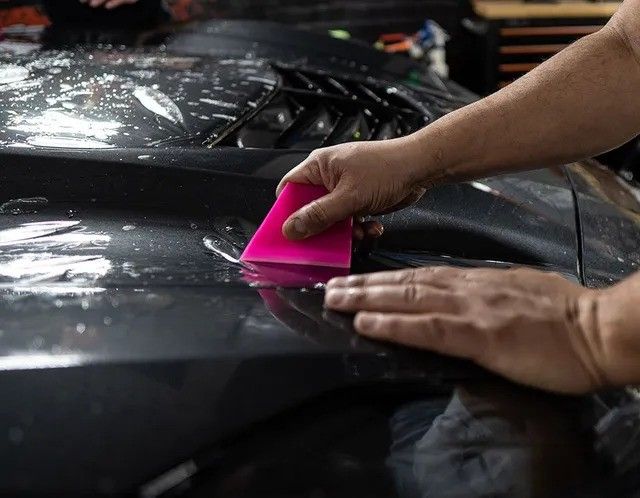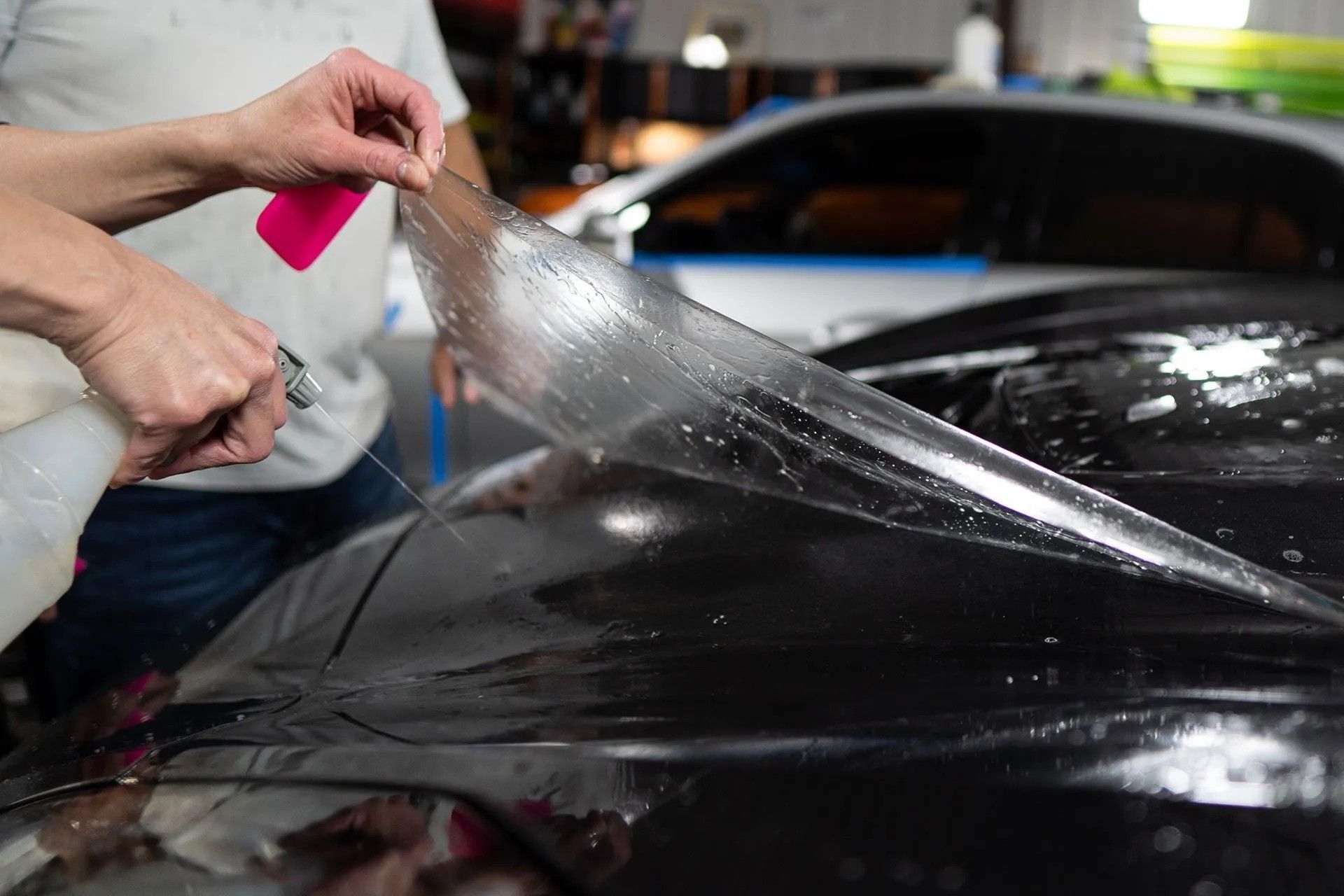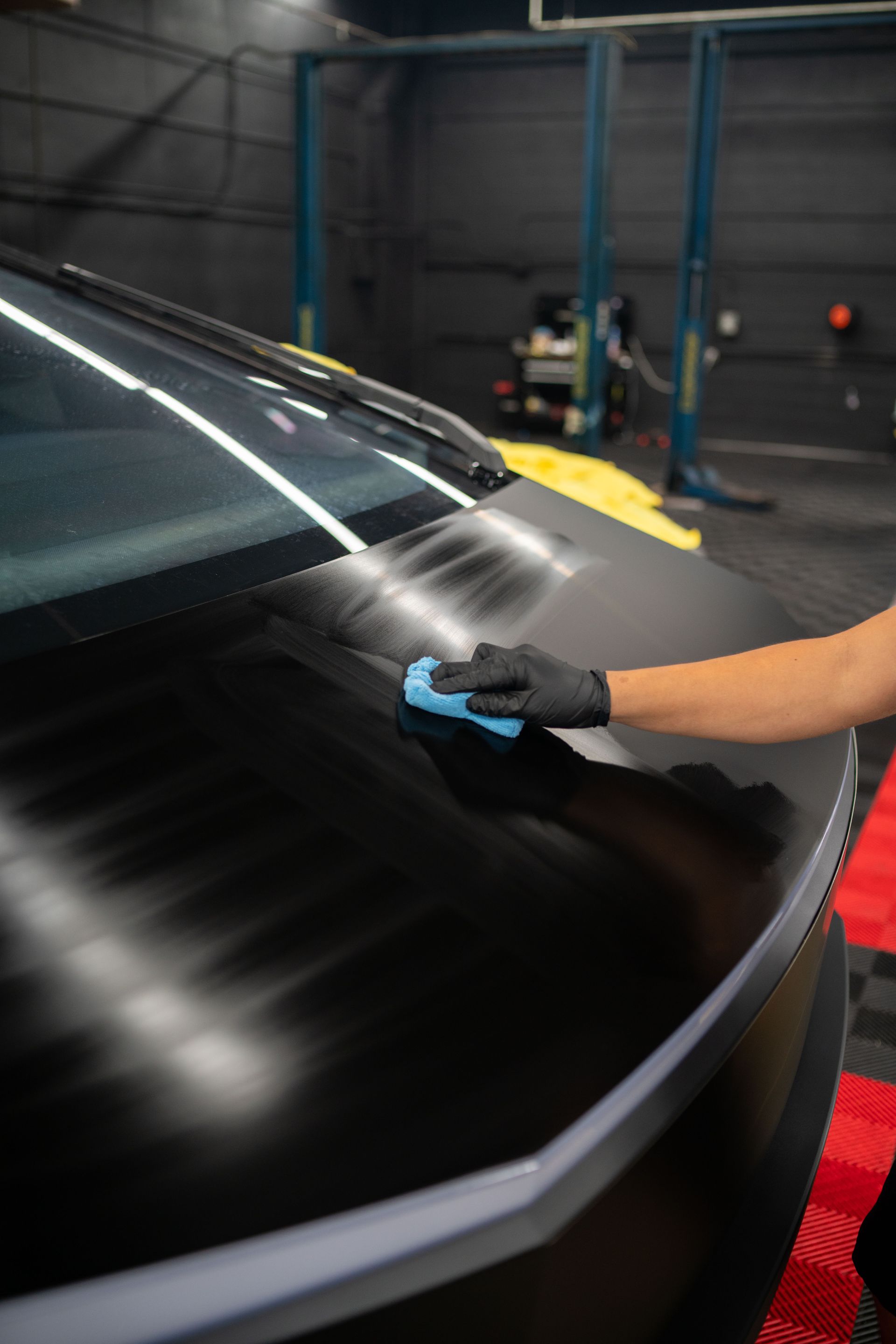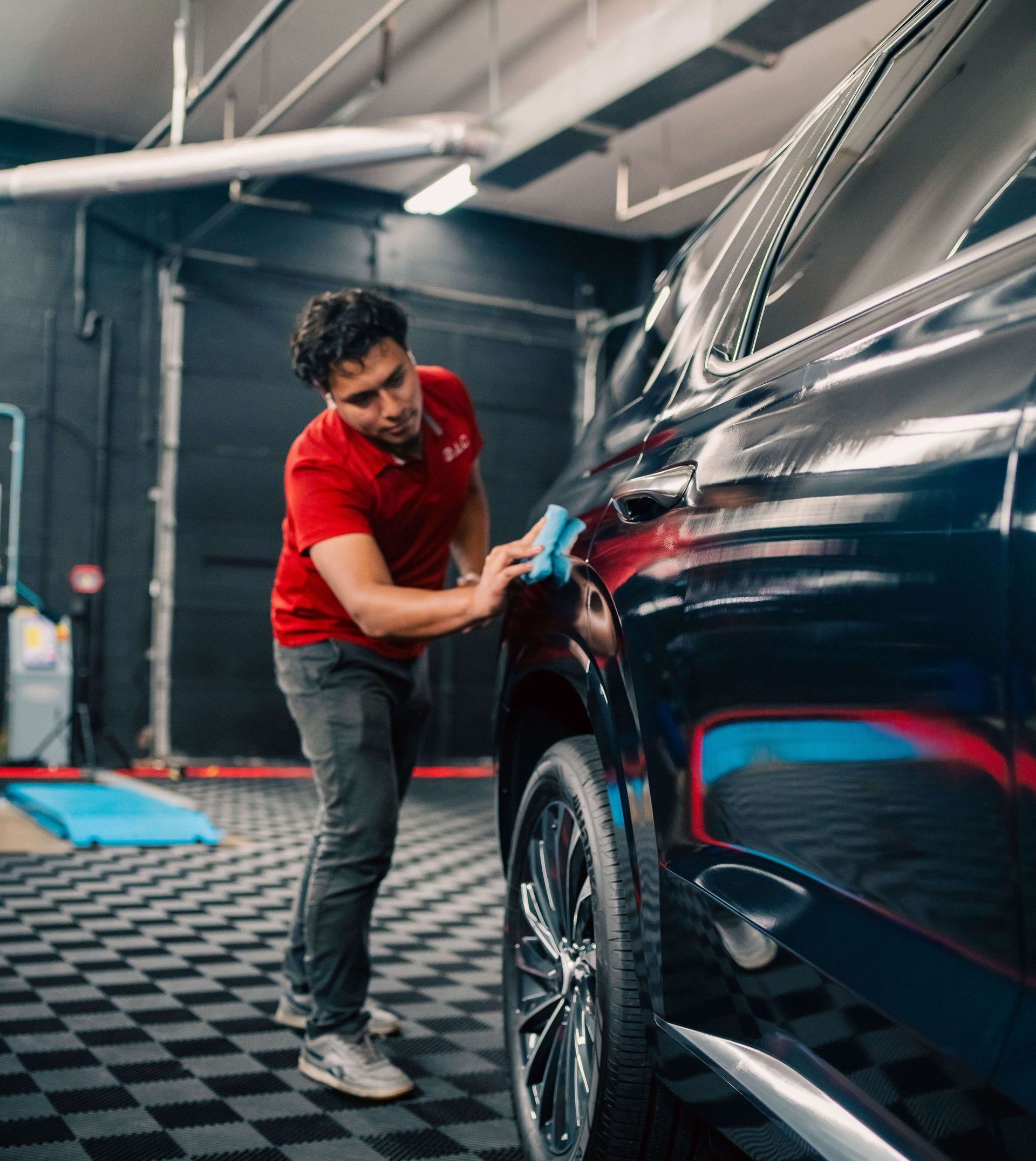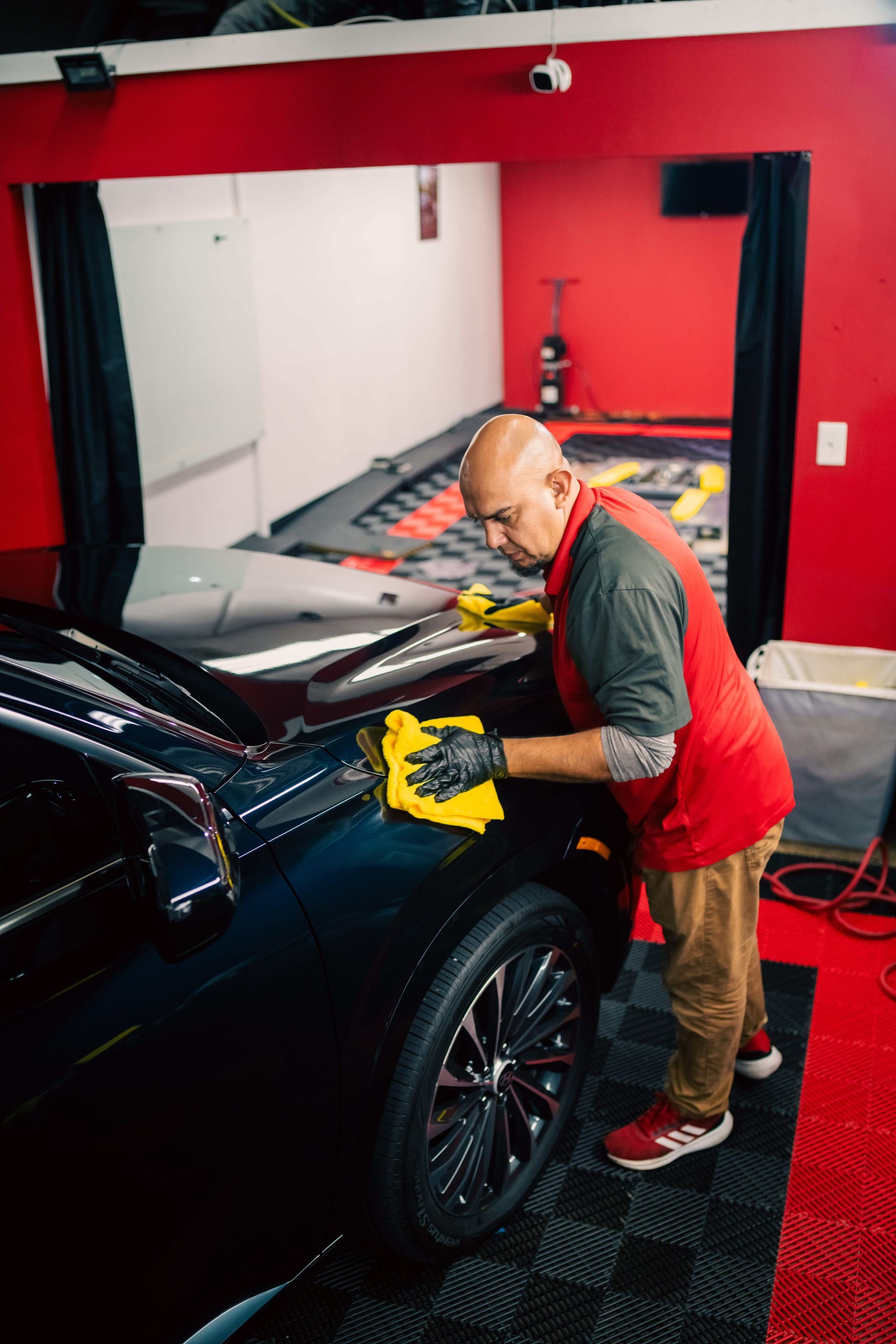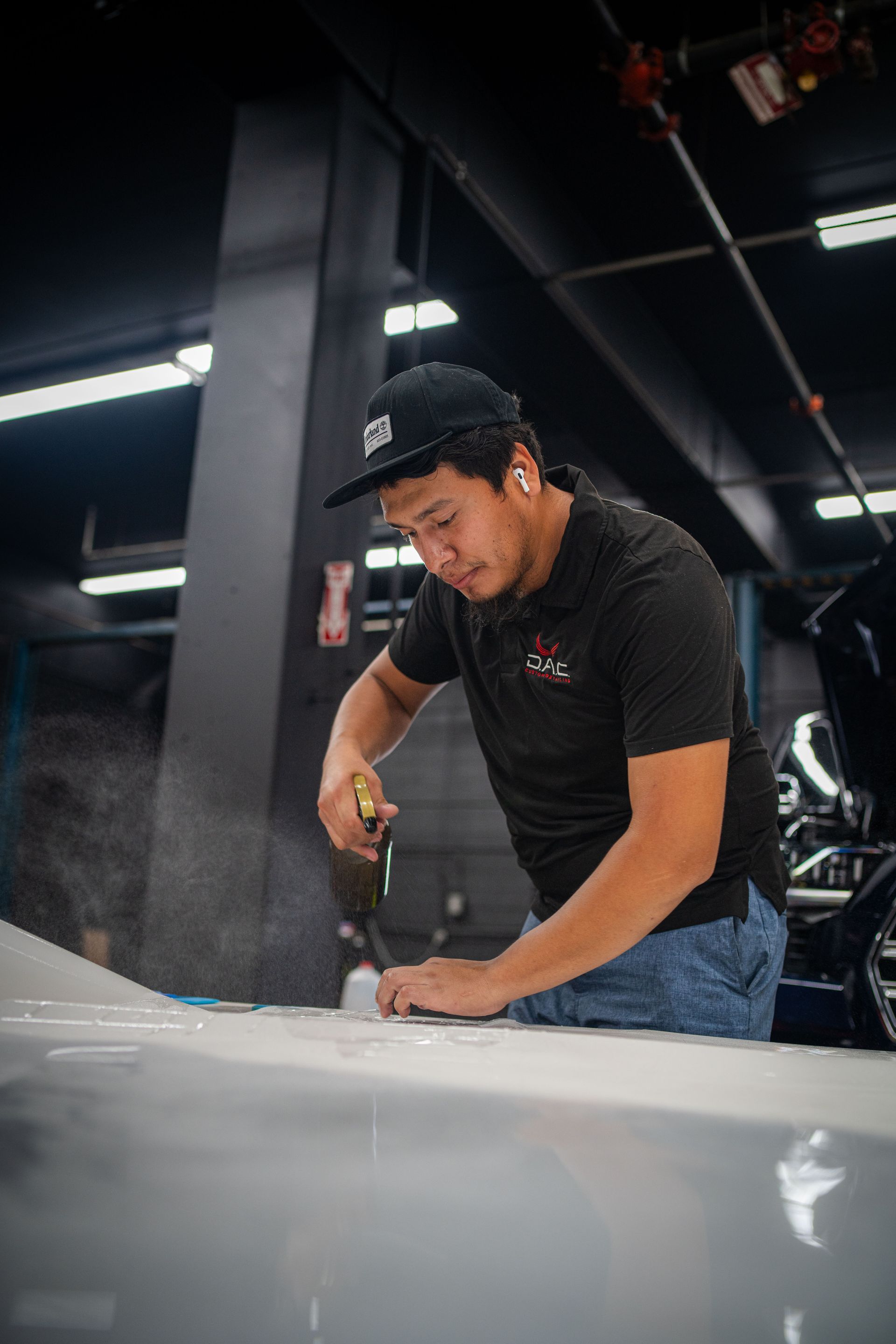REVIVE, PROTECT, MAINTAIN
Paint protection film or PPF, is like a shield for your car's paint job. It stops minor damage like scratches and chips and even protects against things we can't see, like UV rays. So, while protecting your car, it also keeps it looking shiny and new.
Paint protection film acts as a barrier against scratches, chips, and environmental elements, preserving the exterior paint and overall appearance of your vehicle. This proactive investment in PPF not only safeguards against potential damage but also contributes to retaining the aesthetic appeal and resale value of your car.
Understanding Paint Protection Film and Its Function
You may wonder: What exactly is paint protection film and why all the fuss about it? In simple terms, PPF is like a suit of armor for your car. It's a thin, transparent layer expertly applied to the exterior of your vehicle. This layer is designed to shield your car's paint from a range of potential damages that can otherwise detract from its appearance and even impact its resale value. More than just a protective layer, PPF acts as a barrier against common paint enemies like stone chips from gravel on the road, swirl marks from washing, bird droppings, and harmful UV rays that might cause your paint to fade over time. The fantastic thing about PPF is that it's almost invisible, ensuring that the beauty of your car isn't compromised in any way. It's not just about maintaining the visual appeal; PPF also serves as a shield against wear and tear. By reducing the need for frequent paint touch-ups or repair work due to damage, you're actually saving money in the long run. Cosmetic repairs are often quite expensive, so investing in the protection of PPF won’t just save you effort but also maintain the value of your vehicle by keeping it looking like new.
Another key aspect to consider is how PPF allows for customization without any permanent alteration to the original paintwork. Car owners who take pride in uniqueness can opt for custom designs without affecting the car’s original appearance. This provides an avenue for personal expression without compromising the original look of the vehicle. In essence, owning a car with PPF can instill a sense of pride and encourage better overall maintenance practices. And if you ever plan to sell or trade in your vehicle, rest assured that its well-maintained exterior will be a strong selling point. As we can see, paint protection film goes beyond mere physical protection; it plays a strategic role in preserving a car's aesthetic appeal, reducing maintenance costs, and enhancing resale value for car owners.
Primary Benefits of PPF Installation
When it comes to maintaining the value of your vehicle, paint protection film (PPF) offers a myriad of benefits that go beyond just surface-level protection. This thin, transparent film serves as an invisible shield, preserving not only the visual appeal but also safeguarding the structural integrity of your vehicle. Let's take a closer look at the primary benefits in detail.
Enhanced Aesthetic Appeal: The most obvious benefit of PPF is its ability to keep your car looking pristine. It acts as a barrier against scratches, chips, and environmental elements like bird droppings and UV rays. By preventing these damages, PPF helps maintain the aesthetic allure of your car, which positively affects its resale value. In the competitive second-hand car market, a vehicle with PPF stands out and justifies a higher asking price due to its well-maintained exterior. The protective film ensures that your car retains that showroom finish for longer, making it an attractive option for prospective buyers or increasing its trade-in value when you decide to upgrade. Essentially, PPF acts as a long-term investment that pays off when it comes to selling or trading in your vehicle.
Extended Longevity: Beyond cosmetic enhancements, PPF extends the longevity of your car's exterior by creating a robust barrier against wear and tear. This means reduced frequency for paint jobs and lower maintenance costs over time. By shielding the paint from damage, PPF significantly reduces the need for frequent touch-ups and repairs, ultimately saving you both time and money in the long run. Regular waxing can offer some protection, but it falls short of PPF's durability. In fact, studies show a significant percentage reduction in paint damage from road debris with PPF compared to traditional methods. This highlights that, despite the initial cost being higher for PPF, the long-term maintenance cost savings far outweigh what traditional methods offer.
Customization Without Compromise: One of the lesser-known benefits of PPF is its ability to offer customization options without permanently altering the paintwork. This greatly appeals to buyers looking for unique vehicles tailored to their preferences. Moreover, owning a car with PPF can instill a sense of pride and satisfaction due to its well-maintained appearance without compromising on personal style preferences. PPF's flexibility enables creative expression through a variety of customization options without having to worry about compromising the original paintwork.
PPF Maintenance: Key Tips
Once you've invested in paint protection film, it's crucial to maintain it so that it can continue doing its job effectively. Here are some key tips to help you care for your PPF and keep your vehicle looking impeccable.
- Perform regular cleaning: The first key tip for maintaining your PPF is frequent cleaning. This is essential to remove dirt, grime, bird droppings, and other contaminants from the PPF surface. These contaminants can not only make the film look dull but also compromise its protective capabilities. Regular washing with a mild car shampoo and water is usually sufficient to keep the PPF clean but gentle enough not to damage it. Remember that too much pressure while washing can wear down the film prematurely, so gentle yet regular cleaning is the way to go.
- Avoid harmful chemicals: Part of maintaining the longevity of your PPF involves steering clear of harsh or abrasive chemical products. Using approved cleaning solutions specifically designed for PPF maintenance is crucial. These solutions are formulated to effectively clean the PPF without damaging its protective properties. Acidic or alkaline substances, like harsh degreasers or all-purpose cleaners, should be avoided at all costs, as they can cause the film to deteriorate over time.
- Consider professional inspection: It's wise to periodically have your PPF inspected by professionals who specialize in automotive detailing and PPF installation. These experts have the knowledge and experience to identify any signs of wear and tear that may require maintenance. By catching these issues early on, you can address them before they become larger problems that may necessitate costly repairs or replacements. Regular inspections can also reveal any areas where the film might be lifting or showing signs of delamination. Addressing these issues promptly not only helps maintain the aesthetic appeal of your car but also ensures that the protective function of the PPF remains intact.
Cost Analysis of PPF
Paint protection film does indeed add a layer of defense to your vehicle, but it's natural to be curious about the investment required. The initial cost of PPF installation is an important factor to consider and it varies based on several elements. Let's break down these factors to understand the overall cost and benefits associated with PPF. Several key factors heavily influence the cost of paint protection film installation:
- Vehicle Size: The larger the vehicle, the more surface area to cover, which translates to higher material costs and more labor time.
- Type of Package: Different PPF packages offer varying levels of coverage. For instance, a full vehicle PPF package covers all exterior painted surfaces, offering comprehensive protection and therefore being priced higher than partial front or full front packages.
- Brand of Film Used: The quality and brand of the film can significantly affect the cost.
- Experience of Installer: A skilled and experienced installer may charge more for their expertise, ensuring a high-quality installation that maximizes the protective benefits of PPF on your vehicle.
- Additional Customization: Specific customizations or individual panel installations naturally add to the total cost.
It's important to remember that the exact price can vary significantly depending on vehicle type, location, and other unique factors for each installation job. While some might initially balk at the upfront costs associated with PPF installation, it's crucial to recognize that this investment is designed to shield and preserve your vehicle's factory paint over an extended period of time. This not only maintains its cosmetic appeal but also safeguards its resale value by preventing damage from environmental hazards and road debris.
Impact of PPF on Vehicle Resale Value
When it comes time to part ways with your beloved vehicle, you'll want to get the best return on your investment. One way to ensure this is by protecting your car's exterior through the application of paint protection film. But how exactly does PPF affect the resale value of a vehicle? Imagine yourself as a prospective buyer searching for a new car. You come across two similar models—one with PPF and another without. The one with PPF catches your eye because it looks impeccably maintained, with no visible scratches or paint chips. This indicates that the owner cared for their car and took measures to keep it in top condition. As a result, you'll probably be willing to pay more for a car that has PPF protection because you'll know that it won't suffer from the normal wear and tear of daily use.
Now, consider this: the first impression can make all the difference in the world of used car sales. A potential buyer may be more inclined to believe that a car with PPF is in better overall condition, thereby justifying a higher asking price. This confidence in the car's exterior condition presents an opportunity for owners looking to sell their vehicles to command a stronger position in negotiations and realize a more favorable sale. In summary, it's evident that applying PPF to your vehicle can significantly impact its resale value by maintaining exterior aesthetics and reducing maintenance costs—factors that speak volumes in the competitive second-hand car market. As you navigate the complex world of car ownership and resale, consider PPF as not just a protective measure but also an investment in maintaining your vehicle's value.
Quality Paint Protection Film Services in Temple Hills
Preserve the pristine allure of your vehicle with D.A.C. Custom Detailing, your go-to destination for
quality paint protection services in Temple Hills, MD. Our dedicated team understands the importance of safeguarding your car's paint against the unpredictable elements of the road. With precision and expertise, we offer top-tier PPF installations that act as an invisible shield, defending your vehicle from rock chips, road debris, and daily wear. At D.A.C. Custom Detailing, we prioritize quality, ensuring your investment retains its showroom finish for the long haul. Trust us to provide the ultimate protection for your prized possession. Don't wait—schedule your PPF service today or call us at
(703) 298-1864 and let D.A.C. Custom Detailing redefine your car's defense against the rigors of the road in Temple Hills!
Share with friends
